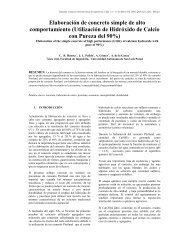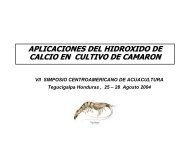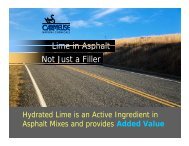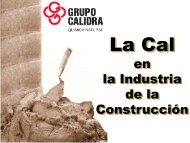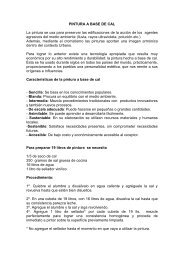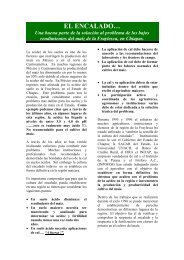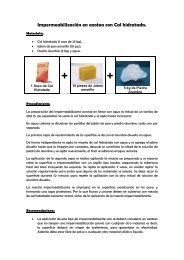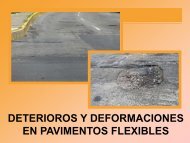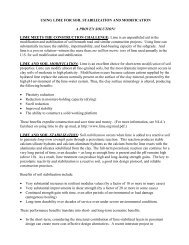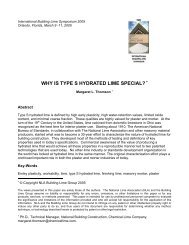Land Contamination: Technical Guidance on Special Sites: Acid Tar ...
Land Contamination: Technical Guidance on Special Sites: Acid Tar ...
Land Contamination: Technical Guidance on Special Sites: Acid Tar ...
Create successful ePaper yourself
Turn your PDF publications into a flip-book with our unique Google optimized e-Paper software.
Geophysical methods, such as resistivity surveys, ground penetrating radar (GPR) andshallow seismic surveys can be used to define the boundaries of lago<strong>on</strong>s, subject to certainlimitati<strong>on</strong>s of each approach. The simplest technique is GPR, but this should be combinedwith a resistivity or seismic survey in order to improve c<strong>on</strong>fidence in the interpretati<strong>on</strong> of theresults.When planning an investigati<strong>on</strong>, careful c<strong>on</strong>siderati<strong>on</strong> should be given to the possibility ofoff-site migrati<strong>on</strong> of c<strong>on</strong>taminants in groundwater from the base of the lago<strong>on</strong>, especially atolder sites. Estimated c<strong>on</strong>taminant travel times and c<strong>on</strong>taminant flow directi<strong>on</strong> should beused to assist in the planning of any groundwater survey.The migrati<strong>on</strong> of liquid tar from acid tar lago<strong>on</strong>s is a possibility, although it is unlikely tohave occurred in most cases. Old mine workings or c<strong>on</strong>duits could, however, allow migrati<strong>on</strong>of tars as could fissured strata. Investigati<strong>on</strong>s of groundwater quality should be c<strong>on</strong>ductedwith the possibility of migrati<strong>on</strong> in mind, with a selecti<strong>on</strong> of m<strong>on</strong>itoring wells being screenedacross the water table (liquid tar or free phase hydrocarb<strong>on</strong>s will tend to float <strong>on</strong> thegroundwater).Intrusive WorksWith regard to the use of intrusive investigati<strong>on</strong> techniques at acid tar lago<strong>on</strong>s, the followingpoints are relevant:• careful c<strong>on</strong>siderati<strong>on</strong> should be given to the methods adopted for the site investigati<strong>on</strong>,as the ground may not be str<strong>on</strong>g enough to support c<strong>on</strong>venti<strong>on</strong>al drilling/excavati<strong>on</strong>equipment and it may be difficult to keep trial pits and, in some cases, boreholes open;• if the lago<strong>on</strong>s are of high fluidity, then a p<strong>on</strong>to<strong>on</strong> or similar supportive equipment willbe required in order to provide a safe working surface (note that the fluidity of acidtars can vary within <strong>on</strong>e lago<strong>on</strong>). Surface probing can often be c<strong>on</strong>ducted from ahydraulic platform;• the depth of c<strong>on</strong>taminati<strong>on</strong> may vary c<strong>on</strong>siderably and establishing the base of thelago<strong>on</strong>, if this is required, may involve drilling through several n<strong>on</strong>-tarry layers(c<strong>on</strong>sisting of, for example, <strong>on</strong>-site soils, Fuller's Earth and imported soil/wastes).Care must be taken to ensure that the true base of the tar has been reached and thatthere are not further deposits of tar beneath any soil layer (note also that the acid tarmay have migrated up through the soil layer, leading to an intermediate soil layerwithin the lago<strong>on</strong>);• attenti<strong>on</strong> should be paid to ensuring that any investigati<strong>on</strong> does not lead toc<strong>on</strong>taminati<strong>on</strong> of the underlying groundwater by the acid tar or its comp<strong>on</strong>ents bybreaching low permeability media;• excavated wastes, both solid and liquid, must be disposed of appropriately; and• ideally, site investigati<strong>on</strong>s should be carried out during winter m<strong>on</strong>ths when thematerial is less fluid and the producti<strong>on</strong> of hazardous vapours is reduced.R&D <str<strong>on</strong>g>Technical</str<strong>on</strong>g> Report P5-042/TR/04 23



